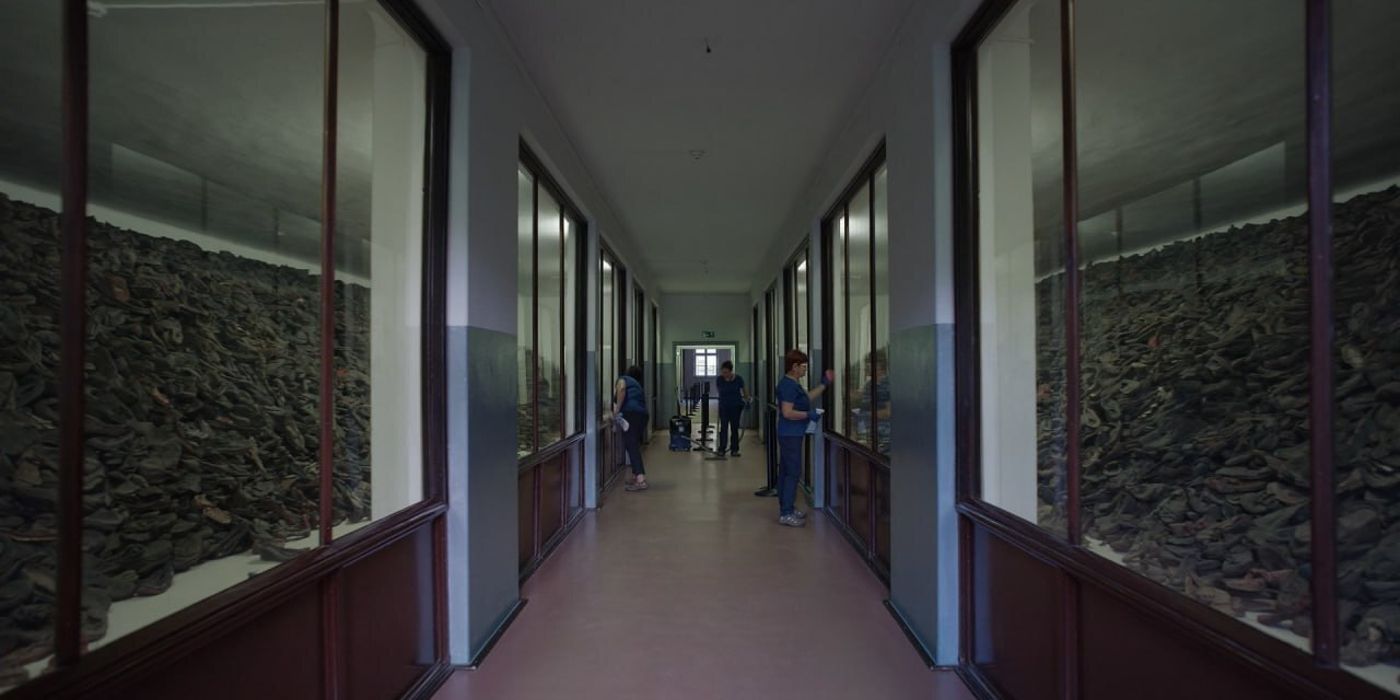Glazor first talked about the research process of the film. They were given access to Auschwitz state museum and the archive which contributes to the costuming and settings designs that truly mimics how concentration camps ran, and Nazis generals are like. I also related to one of the last few scenes of the movie when Glazor made the cut to modern era. We were actually showed to the real gas chambers and incinerators used back in the day. The scene that stood the me the most was the picture below of shoes of Jewish people piled together. Throughout the film, there weren’t any scene of the actual killing or the concentration camps, we could only use imagination, hearing the horrible screaming and gun shots. However, this shot below was particularly strong because actual objects and pieces of the Jewish people helped me visualize how much people were killed during the Holocaust. Again, Glazor is trying to capture the reality of the historical event to the viewer, partially through more abstract scene like the red flower turning to a whole frame of red color and more realistic scene like this one below in the museum.

Another aspect of the Q&A talked about the team’s goal to mimic normality of Nazis family. Glazor mentioned that their script written based of fragments of testimony of survivors from the camps and people who worked in the Hoss Family. They also used a multi-camera system to shoot, which allows the actors to be liberated when acting. I also found another video below that explained it a little more. All the cameras from different angles are shooting together, some are hidden, and some are visible. No camera people are behind them, they are all monitoring over a wall which gave acters the ability to normal, which again is to support the goal to make this project as close to the truth as possible.
In conclusion, Glazor and the whole production team had spent lots of effort into the film to makes it more realistic and let the viewers truly understand what it was like being around the concentration camps during the World War 2. And the two videos I found detailed their ways and attempts of doing so, supporting Bazin’s argument that cinema is fundamentally about pursuing total realism. Glazor’s innovation in film, like what those videos discussed, tried to perfectly capture reality that let viewers feels authentic.